- Details
- Written by: Brittany Chaffee
- Category: Breeding
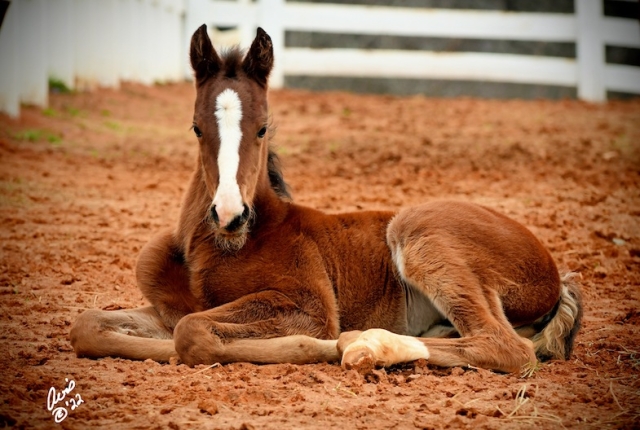 Wing Commander. Supreme Sultan. Edna May’s King. These names have kept the Saddlebred community pulsing with excitement – and eager to build these bloodlines into their breeding programs. Wing horses stacked offspring with large bones and impeccable stamina. Sultan lines composed horses with finer lines and finesse. Edna’s offspring lit up the gaited world. As we look deeper into the breeding process and selecting the right stallion for your mare, one thing is true: though breeding is often considered a gamble, experts believe that your chances of producing a celebrated World’s Champion increase when you focus on weaving together bloodlines that complement each other.
Wing Commander. Supreme Sultan. Edna May’s King. These names have kept the Saddlebred community pulsing with excitement – and eager to build these bloodlines into their breeding programs. Wing horses stacked offspring with large bones and impeccable stamina. Sultan lines composed horses with finer lines and finesse. Edna’s offspring lit up the gaited world. As we look deeper into the breeding process and selecting the right stallion for your mare, one thing is true: though breeding is often considered a gamble, experts believe that your chances of producing a celebrated World’s Champion increase when you focus on weaving together bloodlines that complement each other.
- Details
- Written by: Heather Thomas
- Category: Breeding
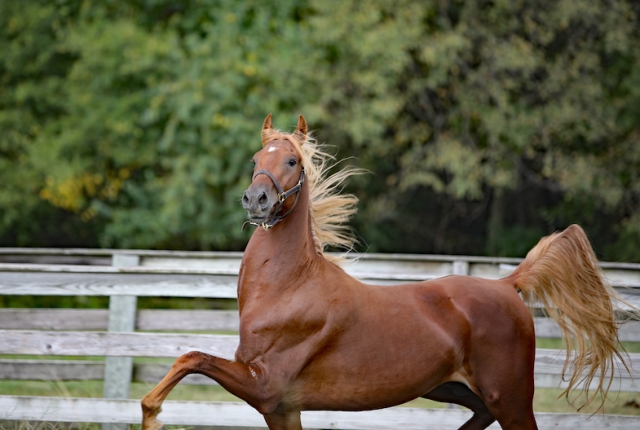 Winsdown Highlander. Photo by Louise Gilliland.
Winsdown Highlander. Photo by Louise Gilliland.
Most young stallions that begin a breeding career have already proven themselves in a performance career. Before entering into their new life in the breeding shed, these young horses will need some physical evaluations, re-training and some time to refocus on their new job and prepare for their first breeding season.
Dr. Peter Sheerin, owner of Nandi Veterinary Associates in New Freedom, Pa. (an equine practice with emphasis on reproduction), said that when preparing a young stallion for breeding one of the first considerations is insurance.
“If the owner is considering first-season infertility insurance, that needs to be done before anything else,” he said. “The insurance exam has to be done before semen is obtained from the horse, and is based on testicular size, a physical exam, etc. You don’t know what his semen is like, but obviously if he has decent-size testicles he should produce adequate semen. The insurance companies have enough information (on many stallions) to know that if the horse passes this type of exam, he will likely do fine.”
- Details
- Written by: Julie Unger
- Category: Breeding
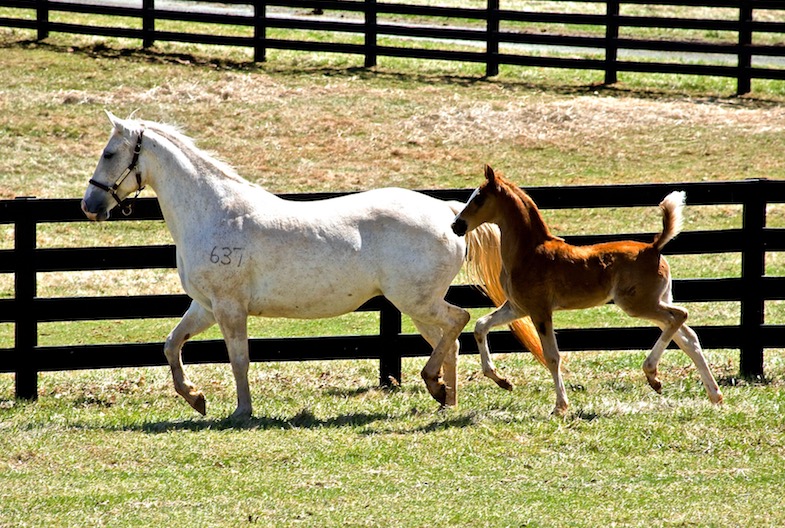 Mares are in foal for about 11 months, which can be an extremely long period of time to be out of commission and out of the show circuit. The solution to this, and to keep your mare competing, while also producing a foal, is through utilizing recipient mares. Reproduction takes place using embryo transfer, oocyte collection Intracytoplasmic Sperm Injection (ICSI); and semen freezing, shipping and storage.
Mares are in foal for about 11 months, which can be an extremely long period of time to be out of commission and out of the show circuit. The solution to this, and to keep your mare competing, while also producing a foal, is through utilizing recipient mares. Reproduction takes place using embryo transfer, oocyte collection Intracytoplasmic Sperm Injection (ICSI); and semen freezing, shipping and storage.
It takes time, and isn’t always perfect, but the odds of having a successful, healthy foal (or more, should you choose to go that route with the veterinarians specializing in reproduction), are greater than they would be through a mare and stallion reproducing on their own without the assistance of advanced science.
Before embarking on the journey of equine reproduction, there are a few things of which to be aware.
- Details
- Written by: Lauren Osborne
- Category: Breeding
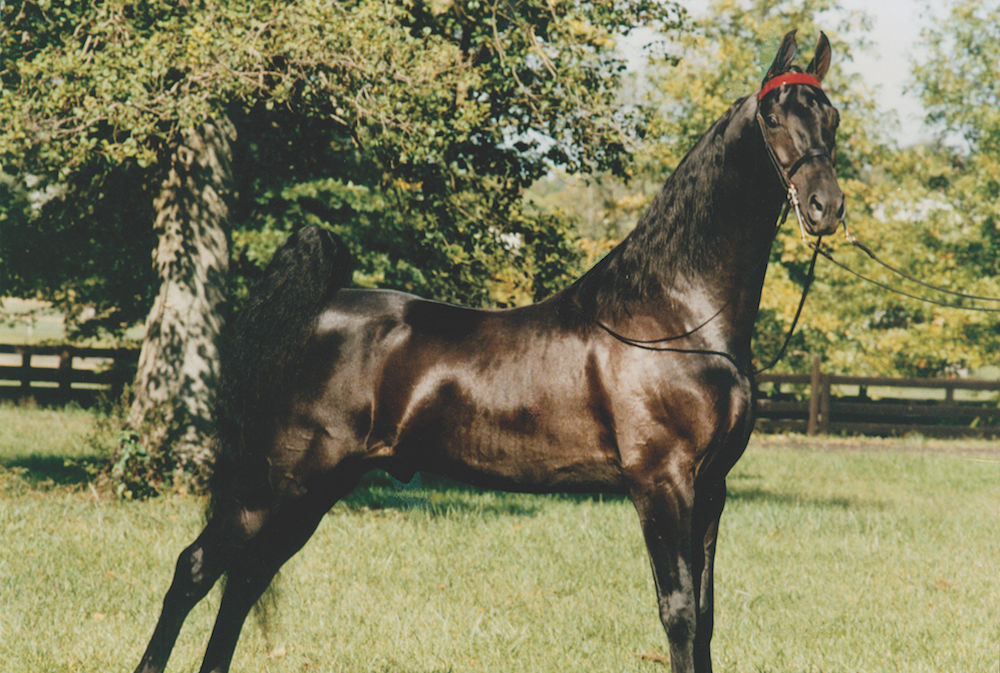 Every spring eager breeders await the arrival of foals in hopes that the next great breeding stallion will emerge. Over a thousand foals will be born, yet a very small percentage will remain intact much past their second birthday. To geld or not to geld is a question that all breeders will toss around as they evaluate their colts. Each breeder may have a different perspective on what they look for in a future breeding stallion, but most agree that a colt must be special, and they must stand out.
Every spring eager breeders await the arrival of foals in hopes that the next great breeding stallion will emerge. Over a thousand foals will be born, yet a very small percentage will remain intact much past their second birthday. To geld or not to geld is a question that all breeders will toss around as they evaluate their colts. Each breeder may have a different perspective on what they look for in a future breeding stallion, but most agree that a colt must be special, and they must stand out.
Ross Millin, an avid South African Saddlebred breeder who makes the trip each year to the World’s Championship Horse Show said it best when he said, “I would rather have an above-average show gelding than an average breeding stallion.” He also stressed, “A colt must have a great broodmare line and the look of a sire. Even if he has the genotype in his ancestry, he must also have the phenotype to match it.” The consensus is that the big five of type, confirmation, ability, disposition, and breeding must all be considered when making this important decision.
- Details
- Written by: Allie Layos
- Category: Breeding
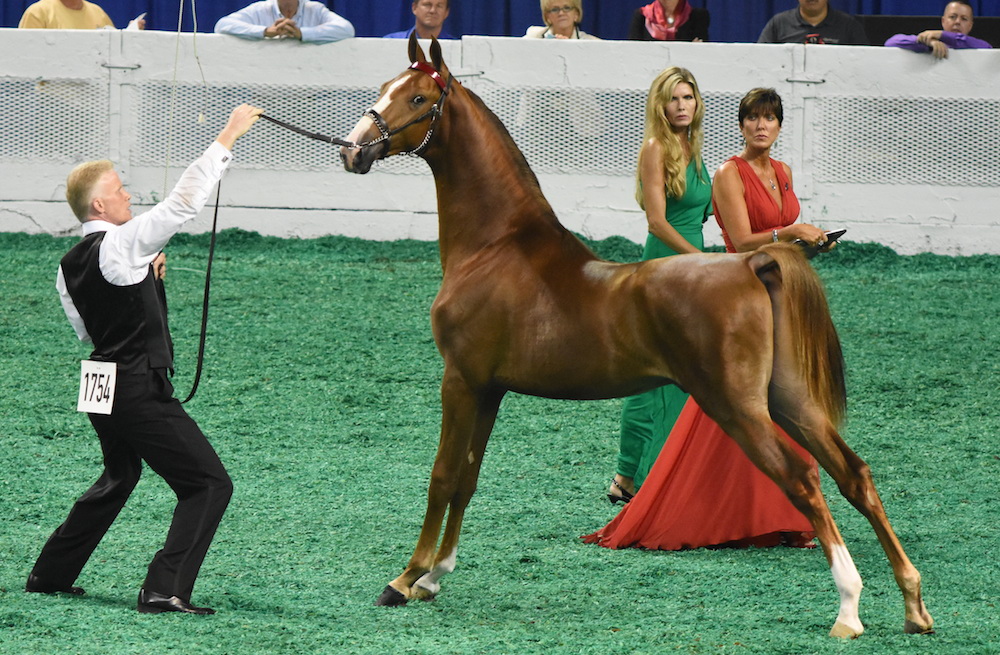
Because of these expectations, coming up with the right name for a show horse can feel like a lot of pressure. But the experience of naming your horse should be exciting, not stressful. With a little knowledge and a bit of creativity, you can come up with a suitable barn name, as well as a name that looks good when someday written in lights.



